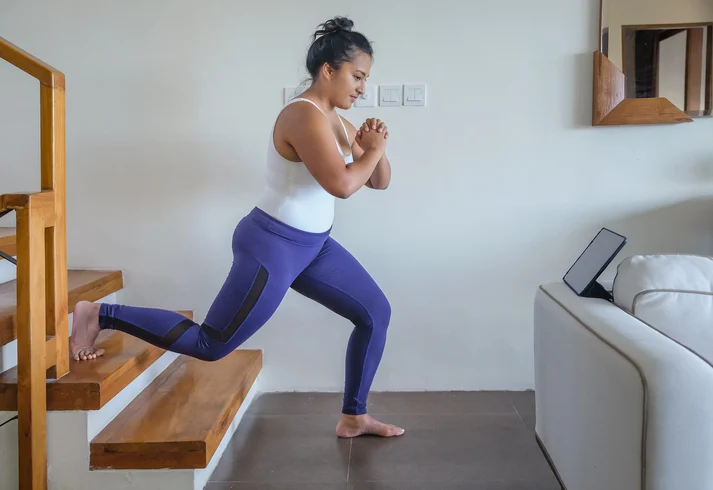Shoulder pain and stiffness seem to be a common complaint these days, especially with the rise of sedentary lifestyles and increased use of technology. The constant hunching over our phones and laptops can lead to poor posture and put unnecessary strain on our shoulders. And with many people now working from home, where ergonomics may not be top-of-mind, it’s even more important to proactively take care of our shoulder health. So, what can you do to improve your overall shoulder health? Here are some tips that will keep your shoulders strong, mobile, and pain-free.

Consider Seeing a Shoulder Specialist
If you’ve experienced shoulder injuries or chronic pain, you need to take special care of your shoulder health. Fortunately, seeing a specialist who focuses on the shoulders can be a valuable resource for you. By working with the right shoulder specialist, you can find out more about their specific treatment plans for your individual needs and develop a personalized plan to improve your shoulder health. If the issue is more severe, they may even perform surgery to help relieve pain and restore function.
Maintain Good Posture
Slouching and leaning forward chronically can lead to muscle imbalances, putting undue stress on your shoulders. To combat this, make a conscious effort to sit and stand with your shoulders back and down, your chest open, and your neck aligned with your spine.
It may feel awkward or forced at first, but with time, these posture corrections can strengthen the muscles around your shoulders, reducing pain and preventing injuries. Posture reminders, such as setting a recurring alarm on your phone or using ergonomic tools like a standing desk, can also help you maintain good posture throughout the day.
Adjust Your Workspace
Speaking of working from home, make sure that your workspace is ergonomically set up. This means having a desk at the right height, a chair with proper lumbar support, and a computer screen at eye level.
If you’re constantly reaching for your keyboard or mouse, or looking down at your screen, you may be putting unnecessary strain on your shoulders. But if you make some simple adjustments to your workspace, you can reduce the risk of developing shoulder pain and stiffness.
Regular Stretching
Just like any other muscle in your body, it’s crucial to stretch and maintain flexibility in your shoulders. Some simple shoulder stretches you can do include shoulder rolls, arm crossovers, and chest openers.
Try to incorporate these stretches into your daily routine, especially if you spend a lot of time sitting or working at a desk. And don’t forget to warm up before engaging in any physical activity that involves your shoulders as you would any other muscle group.
Strengthen Shoulder Muscles
In addition to stretching, actively working to strengthen the muscles around your shoulders is critical for overall shoulder health. Exercises like shoulder presses, lateral raises, and reverse flies target the various shoulder muscles, promoting stability and reducing the risk of injury.
Incorporating exercises that focus on the rotator cuff—a group of muscles and tendons that secure the arm to the shoulder joint—can further enhance shoulder strength and flexibility. Start with low weights or resistance to ensure proper form and prevent overexertion. As these muscles become stronger, they gradually increase weight and resistance.
Take Frequent Breaks
Taking frequent breaks is a fundamental part of your working day, especially if you spend several hours in a sedentary position. Long periods of inactivity can stiffen your shoulder joints and contribute to discomfort and pain. Aim to take short breaks every hour to stretch, walk around, or do some light exercises.
You can even set reminders on your phone to make sure you’re taking regular breaks and moving your shoulders throughout the day. Besides preventing shoulder pain, these breaks can boost overall productivity and reduce fatigue.

Use Ice and Heat Therapy
Alternating ice and heat therapy can be an effective method for managing shoulder pain and facilitating recovery. Ice packs can reduce inflammation and numb the area to alleviate acute pain, particularly after injury or intense exercise. On the other hand, applying heat can relax and loosen tissues and stimulate blood flow to the shoulder. For chronic pain, a combination of ice and heat therapy may provide the best results. No matter which method you choose, it’s essential to pay attention to your body and stop immediately if the pain increases — you don’t need to push through the pain.
Image source: https://unsplash.com/photos/man-in-white-tank-top-mP8wEEaECYI
In today’s digital age where many of us are prone to poor posture and sedentary habits, you must prioritize shoulder health. By incorporating these tips into your daily routine, you can improve your overall shoulder health and prevent or manage pain and discomfort.
Remember to see a specialist, maintain good posture, adjust your workspace, stretch regularly, strengthen shoulder muscles, take breaks, and use ice and heat therapy when needed. With consistent effort and mindfulness of your shoulders’ well-being, you can keep them strong and mobile for years to come.

Jessi is the creative mind behind The Coffee Mom, a popular blog that combines parenting advice, travel tips, and a love for all things Disney. As a trusted Disney influencer and passionate storyteller, Jessi’s authentic insights and relatable content resonate with readers worldwide.
